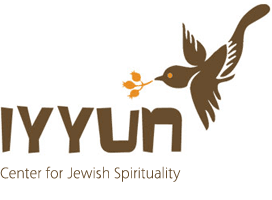Upon awaking, each morning, we find ourselves with the possibility of a fresh start, a new beginning.
The world has awoken from its slumber and is full with a vibrant and radiant energy.
Now what?
A meditation for the first waking moments: Part 1
Self-awareness, refreshment, & positive reinforcement
How will we actually get out of bed and face the endless opportunities and challenges that confront us each day? The moment a person awakens is the finest moment of their day. During the waking hours, we get preoccupied and self-identify with what we do, our jobs, roles, and labels. Even during the more reflective hours of the day when we do try to become more introspective, we still have a tendency, perhaps subconsciously, to define ourselves by labels like father, mother, sister, brother, lover. The only time during the day that we can experience ourselves in our finest, truest dimension is the first moment we wake up.
Before we start thinking about the day and all of its details, there is only the feeling, the sense of being awake and alive.
In this unformed potential experience, we create our first words and thoughts. These initial formations, these thoughts and words, consequently, are very important. The first thought upon awakening and the first words uttered upon awakening have tremendous power and influence since they are the seeds that slowly develop throughout the day. If you wake up feeling good, and reaffirming positive feelings about yourself, your day will be better.
When we wake up in the morning, we can reaffirm that we are the creators of our emotional tendencies. A creator’s emotions and character are not based on coincidental circumstances that occurred to them, causing them to be a certain way. Rather, a creator’s emotional perspective comes from a awakened deep within themselves. The creator is the architect of his own existential reality, not a victim to his surroundings.
There are those who must endure tragedy to gain empathy and those who must be surrounded by kindness in order to be open, loving, and giving. The creator, however, does not allow himself to become what his external surroundings and experiences dictate. Rather, he searches deep within his own mind and heart and develops empathy, kindness, and other desirable states through true introspection and inner searching. He creates his own life experiences, making choices on a personal level, and builds his own character from within.
Each individual experiences life in two worlds. There is the outer world and there is the inner world. One is the realm of the effect while the other is the realm of the cause. When we surrender to the sensory impressions of the outer world, then life is in the realm of effect, and we continually find ourselves in situations and predicaments that feel beyond our control. However, if we live from the inside out, we then we live as, masters. The interior, inner world, is the essence and the cause of the outer.
For self-mastery, a beneficial practice is to set the tone of the day during the first waking moments. The first thoughts, and especially the first words uttered, are very important in how the day will go along. If in the morning we first become inner directed, if we pray, reflect, introspect, then the rest of the day will follow that course, and we will be the masters and creator of the day. We will be the cause of life and not the effect. However, if we choose to fill our mind in the waking hours with ideas that exist in the realm of the effect, then we may find ourselves in the receiving end of life, finding ourselves in the realm of effect, in circumstances and situations that seem beyond our control.
With this understanding that our day is, to a large extent, founded on the first thoughts we think and the first words we utter upon awakening, it is of crucial importance what the first declaration of the day is. This awakening is not only from sleep, but from the slumber of the vanity of this world. Our first thoughts and words are the foundation of the entire day’s consciousness; it gives us a fresh start to life. On a cosmic level, we sleep, so we should become aware that we are renewed at each moment. And life is constantly being renewed. We fall asleep and then wake up enabling us to cultivate a daily awareness of renewal.
Upon awaking there is a traditional prayer, originating in the 1500′s and composed or at least recorded by R. Moshe Ibn Machir in Seder Ha’Yom. The prayer is as follows:
Mode ani- I offer thanks, le’fanecha- to You, melech chai v’kayom- living eternal king, shehechezarta- for you have restored, bee- within me, nishmasi- my soul, b’chemla- with mercy, raba emunasecha- great is Your faithfulness.
In simple terms, we are giving thanks for the new day, and thanks that our soul and body is rejoined. This powerful prayer can be recited even before one washes one’s hands of the impurities of the night since this declaration arouses the part of us that is above and transcendent of impurities.
We are relating to the essence of I- Ani that stands above being contaminated and soiled, and touches upon the essence of our Creator. Because this meeting is essence to essence, the Name of G-d is omitted, for it is beyond names, beyond form, and beyond manifestation.
For now let’s focus our attention on the first two words uttered upon awakening, the words, Mode Ani: “I offer thanksâ€
The first word we utter is modeh, which, more than an acknowledging of gratitude, re-affirms a sense of surrender and humility. Even before saying the word Ani, I, you first say modeh, indicating surrender prior to an assertion of the individual identity; it is the humble inner bow to something greater. In other words, we don’t proclaim “Ani Modehâ€, which puts the “self†before the acknowledgement of surrender.
Our first word is modeh, leading us to open ourselves to a greater reality, beyond the ego, in the natural state of joy.
Modeh has the same root as Hoda’ah, to thank. Hoda’ah is beyond intellect, beyond emotions. It is a sense preceding conscious rational thinking, a sense of feeling grateful, of giving thanks. The idea of Hoda’ah is Bitul- nullification of separate self. Not a surrendering that comes from an intellectual awareness– where there is a self involved – but one that comes first thing in the morning, before any intellectual awareness- and it emanates from the essence of one’s soul. There is no alternative on this level just surrender. It’s the self before the small i. Ani: “Iâ€
Then we proceed with the word Ani- i. The “I†or sense of self only comes after our mode/ our surrender. We acknowledge that there is an “Iâ€. Yet, we realize that the real I is not only our body, not only the corporeal /physical experience, but the transcendent soul beating deep within us. From Ani to Ayin- from i to no-thingness: Ani is spelled Aleph, Nun and Yud, which are the same letters that comprise the word Ayin, translated as nothingness..
The true essence of the person is not their something-ness, which is tangible, but rather their so-called nothing-ness, their non- thing reality, their non-tangible soul.
The process of “ani†is in gratitude and in recognizing one’s own existence; this is the starting point on the journey from the Ani reality to the Ayin reality, from existence to nonexistence, from ego to humility. The Ayin is the deepest levels of the soul, it already exists nestles within our experience of Ani, for in fact, the Ani is the Ayin. It requires just a variant arrangement of the letters, an alternative sequence.
In the I/Ani paradigm the letter Nun comes before the Yud, in the nothingness/Ayin spelling the Yud comes before the Nun. The letter Aleph represents the totality of the relationship. The point on top reflecting the Ein Sof -endless light, the inverted point below symbolizes us, and the Vav in the middle is the ladder, the connection. The Aleph is the Ayin, with a Yud above, Yud below, and the Vav in the middle. Numerically speaking, each letter Yud equals ten, and the Vav equals six, all of the letters together creates the number 26, which is the value of G-ds name, Yud- Hei- Vav-Hei.
Nun represents man and the ability or activity of Nefilah- falling. Unlike the rest of creation, which is static, mankind alone has the potential to fall and to rise again. What is more, the source of each letter is the first time that very same letter appears in the Torah as the beginning of a word. The first time the letter Nun appears in the Torah is in the word Nefesh, living being, a sentiment consciousness belonging to a living being on earth. Yud is the point above; the Yud represents G-d.
Essentially, Aleph is the relationship, Nun is us, and Yud is our Creator.
In the I/Ani condition, the Nun precedes the Yud, representing the idea of Nofel, the potential to fall as the center of reality, before the Yud, as in G-d. In a state of I/Ani there is the constant threat of potential descent, of separateness consciousness. Conversely, in a condition of Ayin, first comes the Yud, the Ein Sof, the endless Infinite, followed by the Nun of man. The “i†of man in this reality is one with, and nullified to the Ultimate I, and so he feels himself as Ayin, losing lower self as he is merging with Higher self.
Additionally, Yud is representative of Yediya, awareness and consciousness. If the Yud is at the end of the word, it represents consciousness that is outer and externally directed, as it is in the reality of Ani. In the Ani –ego centered paradigm pleasure and the general sense of self is derived from ‘something-ness’ from things outside the self. On the contrary, when the Yud is in the middle of the word as in the word Ayin, awareness is directed inwards, and pleasure and ones sense of self comes from ones nothing-ness, ones soul.
In a condition of Ayin, paradoxically, less is more. The less the person feels himself to be, and the less space he occupies the more feels and becomes.
Reducing one’s own Yesh or “Is-nessâ€, one’s separateness and independence, allows for the person to connect with Divine no-thingness from which all somethingness is created. Whereas Ani –ego Nefilah comes before Yud, the opposite is also true, and when Yud comes before Nun there is total transcendent and spiritual awakening.
A Tzadik, a person who has reached and revealed this level, acts like the actual letter Tzadik.
The letter Tzadik has the shape of the letter Yud on top of a Nun. As for the Tzadik, the Yud is above the Nun, creating one who is inner directed, and whose interactions with the outside world come from a place of Yud consciousness.
So who is saying this prayer, the Ani or the Ayin? It depends.
On the simple level, the “thing†praying is the I/ego/Ani, yet on a deeper level, it is being transmitted by the Ayin, coming from a place beyond self, the Modeh before the ani. The prayer exists on multiple levels and shifts into various moods of being, as it is our entirety that is praying. The Ayin/ Ani pendulum is expressed in how we come to view our lives. Do we first see the Yud/the divine wisdom, or do we first see hardship, the Nun/Nefila? In life do we see challenges as opportunities or do we see them as hurdles? Are they setbacks or propellers? We have the choice to be like a Tzadik and see the Yud –the wisdom and opportunity before the Nun, or we can opt to act upon our subjectively perceived limitations.
Clearly, life is best served when we can envision ourselves at our best, let’s choose to do so.
(this is an excerpt of a longer piece on Modeh Ani, please stay posted for the next installment)







